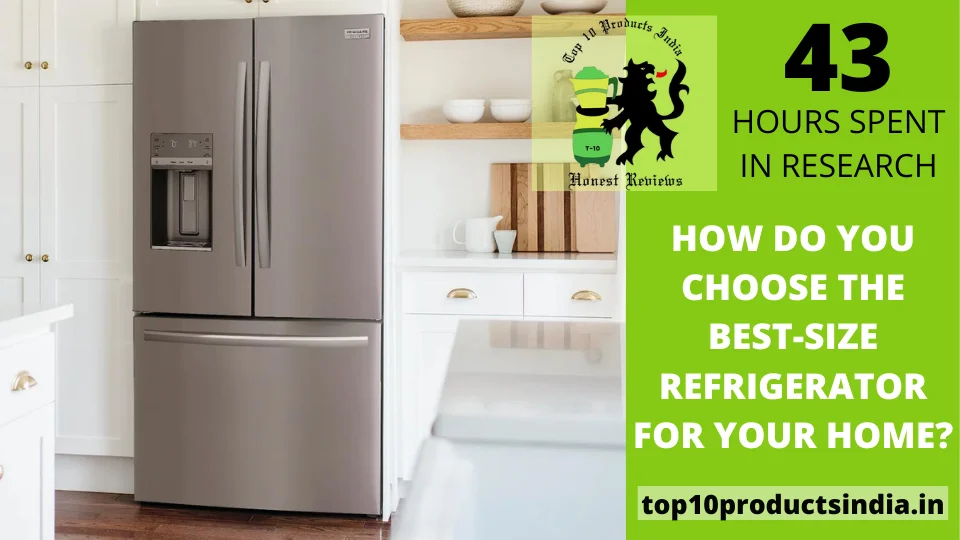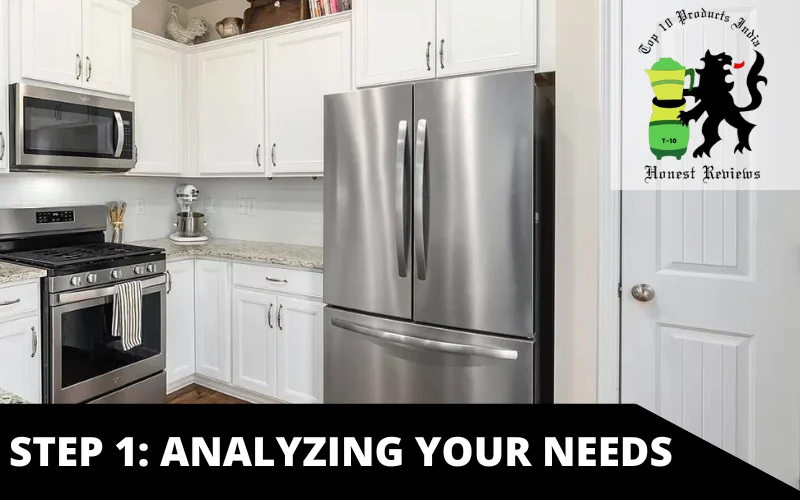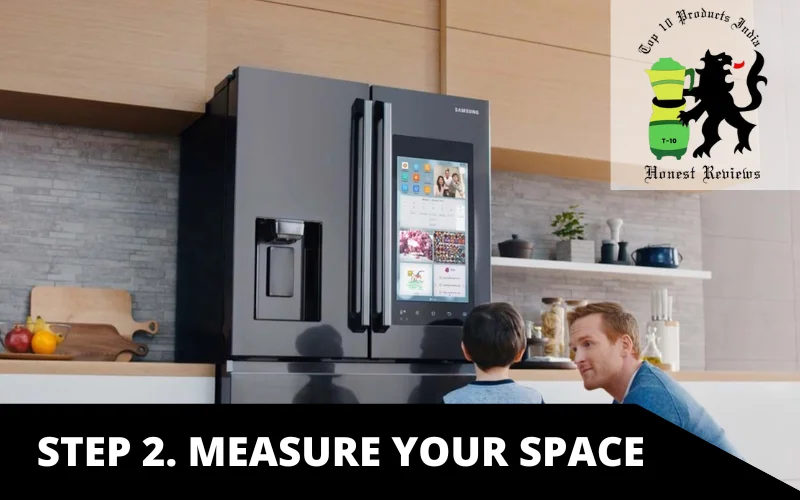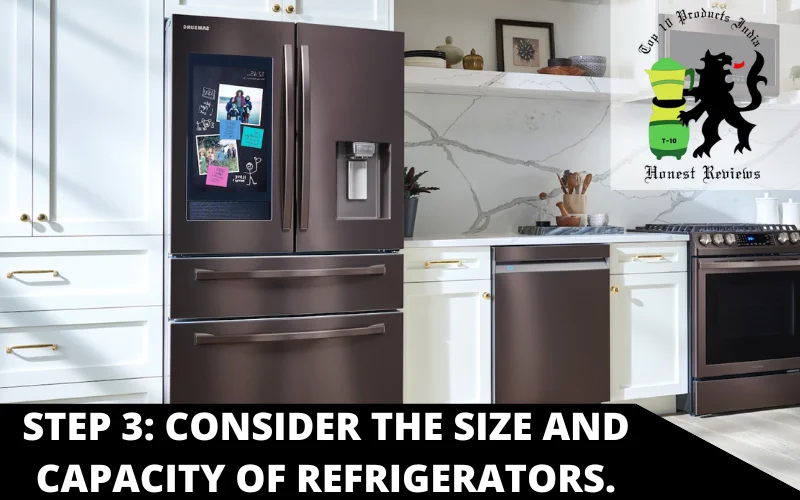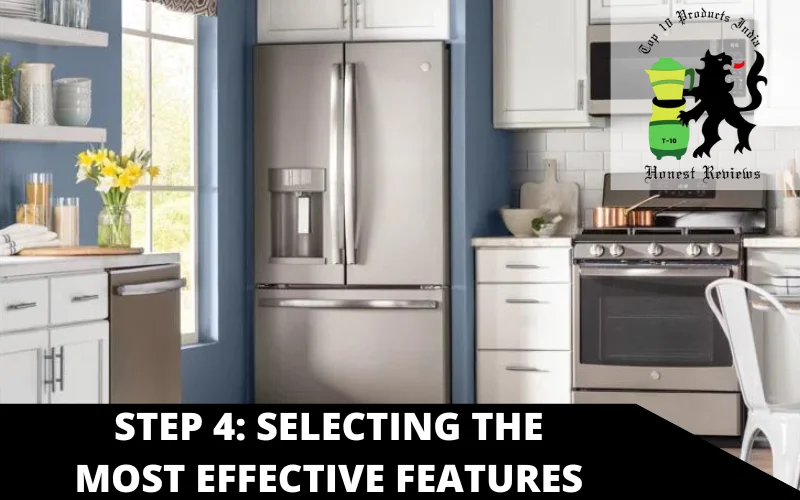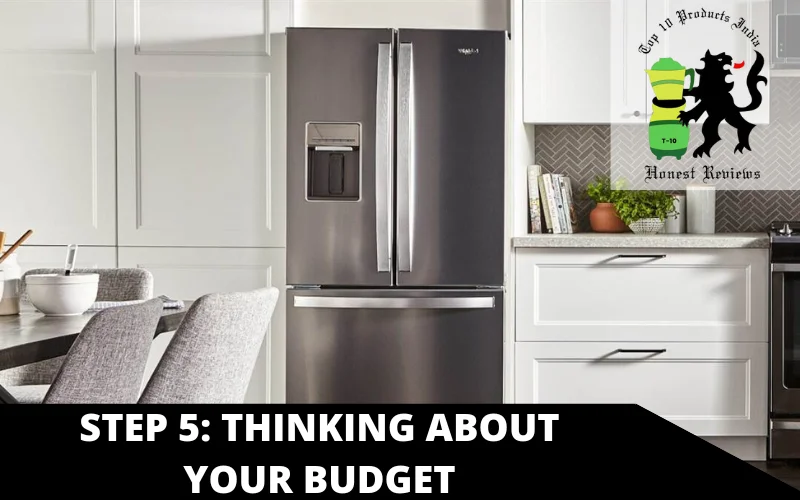When you are buying a refrigerator for your home, selecting the proper size is vital. A refrigerator that isn’t large enough for your family’s needs cannot provide adequate storage space. However, a too-big refrigerator will create unnecessary space, which can lead to increased energy bills.
We will go over the best-size refrigerator for your requirements. We will discuss the various factors to consider, such as your household size, eating habits, space and budget. We’ll also go over the various types of refrigerators, their capacities, the features you should look for, and strategies to cut costs.
At the end of the article, you’ll be armed with information on how to make an informed choice and select the best refrigerator for your home.
What is the reason that choosing the right size refrigerator is important?
Selecting the correct size refrigerator is essential for a variety of reasons. If you have a refrigerator that’s too tiny for the needs of your family can lead to inadequate storage space.
This could result in food waste and the necessity for regular grocery purchases. However, a refrigerator that is too big for your needs could result in a higher energy cost since the additional space will need additional energy for cooling.
The dimensions of the refrigerator determine its dimensions, and it’s crucial to ensure that it is a good fit in the space available within your kitchen. A refrigerator that’s too large may not be able to pass through hallways or doors or hallways, while one which is too small can appear unnatural and won’t function as intended.
Selecting the correct size refrigerator could affect your budget since larger refrigerators are generally more costly than smaller ones. Moreover, you don’t want to spend too much on a fridge that is more than you require. So, it’s crucial to consider your family’s needs and the space available before purchasing a fridge.
How do you choose the best-size refrigerator for your home?
Follow these 5 steps to choose the best sized refrigerator for home:
STEP 1: Analyzing Your Needs
Identifying the size of your household
When deciding on the best size refrigerator, the first step is to consider what size you want for your family. A single person or couple may not require the same amount of storage space as families with 4 or more. Thus, you must consider the number of people likely to use the refrigerator daily.
Identifying your storage requirements
Once you have determined the size of your family Next step is to determine your storage requirements. It is important to consider the kinds of foods and beverages which you normally keep in your refrigerator.
For example, if you consume a lot of fresh vegetables and fruits, it is possible that you will require more room to create drawers. If you often host guests, you might need extra space to store drinks and snacks.
Be aware of your eating habits
Your eating habits could influence the size of the refrigerator you will need. If you buy grocery items in bulk, you might require a bigger refrigerator to accommodate the bulk of your shopping needs. You might require more storage space if you cook meals at home regularly and store leftovers.
If you prefer to dine out more frequently and don’t store a lot of food items in the refrigerator, you might be able to do using a smaller refrigerator. So, it’s crucial to take into consideration your lifestyle and storage requirements when you decide on the ideal size of the fridge to fit in your house.
Step 2. Measure Your Space
Assessing the space available
After you’ve analyzed your requirements, then the second step would be to calculate the space available inside your kitchen. This will help ensure that your refrigerator will fit properly and won’t interfere with furniture or other appliances.
Take measurements of the width, height, and depth room in which you plan to place the refrigerator. Be aware that the refrigerator must have some space between the front and sides to allow adequate airflow.
In the case of hallways and doorways, it is important to consider
Alongside taking measurements of the available space and the entrances and hallways that lead towards your kitchen, make sure that your refrigerator will fit through any small spaces or turns, as well as the doorways that lead into your kitchen.
If you are living in a condominium or an apartment, check with the building’s management to ensure that the refrigerator you pick is compatible with weight or height restrictions.
Planning for ventilation
Proper ventilation is vital to the efficiency of your refrigerator as well as its lifespan. When choosing the best location for your refrigerator, ensure enough space around it to allow air circulation. The refrigerator’s back must have at least two inches of space from the wall.
Likewise, the sides need at least 1 inch of room. If the appliance is located within an enclosed space, like a cabinet or closet, ensure it has adequate ventilation to avoid overheating. By measuring the space and creating a plan for the ventilation system, you can ensure that the new refrigerator fits well and operates effectively.
Step 3: Consider the size and capacity of refrigerators.
A brief overview of the most common sizes for refrigerators
Refrigerators come in different sizes, from compact models designed for small spaces to larger models suitable for families. The most popular sizes are:
- The compact between 3 and 5 cubic yards
- Mid-Size: 12 to 18. cubic feet
- Full-Size The size ranges from between 18-32 cubic feet.
- Large More than 32 cubic yards
Explanation of cubic feet as well as storage capacity
The capacity for storage of fridges is usually expressed in cubic inches. Cubic feet are the interior space of the refrigerator, which includes doorways, the primary compartment and shelves or drawers.
The larger the number of cubic feet, the greater the refrigerator’s storage space. But remember that storage capacity may differ based on the configuration of your refrigerator, for instance, the number of drawers, shelves, doors, and shelves.
Comparison of bottom-freezer and top-freezer models and side-by-side models
Three primary refrigerator types are top-freezer and bottom-freezer, and side-by-side. Each one has advantages and drawbacks in terms of storage capacity as well as ease of use.
- Top Freezer: They feature the freezer compartment over the fridge compartment. They’re generally the most cost-effective and room-efficient. However, they might not provide the same amount of storage space as other models.
- Bottom-Freezermodels: These models come with the freezer compartment below that of the fridge compartment. They’re more expensive than top-freezer models. However, they provide more convenience as the fridge compartment is located at the level of your eyes.
- Side by Side: These models include the freezer and refrigerator compartments that are adjacent to each other. They have the greatest storage space and are great for large families or those who often host guests. But, they can be less efficient in energy use and unsuitable for smaller kitchens.
Understanding the various kinds of refrigerators and their capacities will help you select the best size and configuration that meets your requirements.
Step 4: Selecting the Most Effective Features
Temperature control
Temperature controls are an important aspect to consider when selecting the right refrigerator. Choose a refrigerator that allows you to alter the temperature of the freezer and refrigerator in separate ways. Certain models have other temperature controls, like the “quick chill” or “vacation” mode.
Shelves and drawers
The drawers and shelves inside refrigerators significantly impact the capacity for storage and arrangement. Find a refrigerator with adjustable shelves that permit you to alter the interior space according to your family’s needs.
Certain models have drawers that are specifically designed for certain things, such as the deli drawer or a drawer for fruit and vegetables. Consider your storage needs and lifestyle when selecting the best model.
Efficiency of energy
Energy efficiency is a major factor for environmental and cost reasons. Choose a fridge with the Energy Star rating, meaning it has met the energy efficiency standards that the U.S. Environmental Protection Agency sets. The models that come with features like LED lighting and automated defrosting are also more efficient in energy usage.
Other options to consider include the following:
- Ice and water dispensers.
- Door alarms.
- Smart tech that lets you manage your refrigerator using your mobile.
Selecting the best features will improve your fridge’s efficiency and ease of use.
Step 5: Thinking About Your Budget
Making a budget
Budgeting is essential when choosing the best model of refrigerator that is suitable for the space you have. Refrigerator prices differ widely based on features, size and brands. Find out what you can spend and adhere to your spending limit.
Finding cost-saving strategies
While certain features are helpful, they are costly for the fridge. Be aware of what features are essential and what features are desirable but not essential. A few cost-saving options include ice makers that are manual simple shelves and drawers, and basic exterior designs.
The best value for dollars
When selecting a fridge, it’s crucial to consider the long-term benefit and the upfront price. Find a refrigerator that is energy efficient and durable. It also comes with an excellent warranty. Review and compare ratings from other customers to understand the quality and reliability of the various models.
In the end, getting the most price for your money is selecting a refrigerator that will meet your needs, meets your budget, and comes with the features and features that matter to you.
FAQs
What is the ideal size refrigerator for my house?
The ideal dimension refrigerator to fit your needs is based on various factors, including the available space, the number of people who will use it, and the types of beverages and food items you intend to store inside it. The best method to determine the size that best suits your needs is to take measurements of the available space and then compare it to measurements of the refrigerators you find that satisfy the other requirements.
How can I determine the area needed for a new refrigerator?
You must determine the length, width and depth of the area where you plan to put the new refrigerator. It is important to leave at least one inch or two spaces on each side to ensure proper ventilation and any other clearance required per the appliance you’ve placed in the room. It is also essential to take into consideration things like drawer pulls, door handles mouldings, trim mouldings and refrigerant lines, which could be protruding into the space when you measure them.
What kind of refrigerators do you have?
There are many different varieties of refrigerators available today that range from traditional top-loading models with freezer compartments to modern side-by-side units with bottom-mounted freezers and even full French door models equipped with Ice makers. Furthermore, various capacities are available from different models and brands that will aid in finding the right refrigerator that will meet your storage and budget-friendly requirements.
How much power does a huge refrigerator use up?
The energy usage of a larger refrigerator can vary based on the type of refrigerator, its features, and how it is used. However, they use greater energy than small units because of their larger size and power consumption. But, most modern models have energy-efficient options such as adjustable thermostats and multi-cycle defrost options that reduce their energy usage over time.
Do I need special ventilation for my refrigerator?
All refrigerators require an air vent for proper operation without malfunctioning or overheating because of insufficient air circulation in small areas like kitchen cabinets or closets that do not have windows. According to the model you own, the vents could be pre-installed or require installation before use. Check what ventilation configuration is installed in your refrigerator before purchasing one if you are concerned about this.
Are bigger refrigerators more costly in comparison to smaller models?
Refrigerators with larger capacities are generally more expensive than smaller models due to their larger capacity and the additional features like integrated water filters or dispensers. However, this may not be the case all the time however, and there could be some exceptions based on the availability of the brand and discounts; therefore, make sure to research before committing to any option to find the most affordable price that fits your needs the best!
Conclusion
The right model for the size of your house is a crucial choice that requires careful consideration of the size of your family, storage requirements, food habits, space available, and budget. Knowing the various types of refrigerators and the features they offer will help you make an informed choice.
By analyzing your requirements and space requirements and considering the best specifications and budget, it is possible to find the right refrigerator that has enough storage space and is compatible with your family’s needs and your lifestyle. With the right fridge, you’ll be able to keep your food well-organized and fresh for many years.

